Bottlegate: Dove’s 2017 marketing nightmare
Leading brands have great marketing. They need to because it’s how they stand out from their competitors. With massive budgets allocated to marketing, companies expect campaigns to be revenue drivers.
According to Deloitte’s CMO survey, marketing budgets on average take up to 11% of the total company’s budget. The biggest spenders are those in the consumer packaged goods industry. This industry forks out more than double the average budget. 24% to be exact.
With huge sums of money being spent, utmost perfection is expected. However, we are humans after all. Sometimes, we make mistakes that turn into disasters. It happens to the best of us.
Let’s zoom in on Dove and its marketing practices. In 2017, it launched a campaign that became known as Bottlegate. But before we go deeper into the campaign, let’s take a look at Dove’s background. Owned by Unilever, Dove is a personal care brand sold in over 150 countries. Brand Finance estimated the Unilever-owned company to be worth $4.1bn (£3bn), making it the 10th most valuable beauty brand in the world. It offers products such as deodorants, body washes, lotions, hair care, and facial care.
Over the years, Dove has established a brand image through its marketing efforts. In the minds of its customers, it has established itself as a purpose-driven brand. It supports and celebrates women.
When you visit the Dove website, it refers to itself as the ‘home of real beauty’. As you scroll down, you’ll read:
“Beauty is not defined by shape, size, or color – it’s feeling like the best version of yourself. Authentic. Unique. Real.”
With its marketing team, this personal care brand took a very intelligent approach. It conducted a study to explore the thoughts and emotions of its consumers and potential consumers. And the approach was spot on!
The ‘Real Beauty’ campaign kicked off in 2004. It was the result of a study conducted on 3,200 women all around the world aged 18-64. Dove was on a mission to understand what women felt and thought about living in this era.
Very interesting numbers from the study:
31% of women viewed themselves as natural
29% of women viewed themselves as average
Only 2% saw themselves as beautiful
The numbers were obvious. Most women did not see that they were beautiful. The majority of women thought of themselves as your regular Jane Doe. Moreover, one-third leaned towards being natural. With these results, Dove moved on to the next step.
The study changed the beauty industry. Dove started using digital experiences to emotionally connect with its audience. The strategy was to help women feel comfortable with who they were. That normal people also mattered to the world. And they definitely succeeded.
For more than 15 years, Dove ran successful campaigns associated with a positive body image. One very effective campaign was their billboard ads. When other brands focused on only using professional models, Dove hired ordinary women to grace their billboards. The public loved this campaign because it showed that “normal” women could also be models.
Success after success, the “Real Beauty” campaigns continued to roll out. However, in 2017, Dove caught everyone by surprise. The launch of the limited edition bottles aimed to communicate that every body type is beautiful. But it failed to do just that. The campaign received some heavy blows on the Internet and proved to be a complete disaster.
Check out the advertisement here:
The campaign
Dove manufactured six different types of bottles. What was the difference? The shower gel inside was the same, but each bottle resembled a woman’s body type. The campaign was the brainchild of globally recognized Ogilvy London and this is the message they were trying to convey:
“Beauty comes in a million different shapes and sizes. Our six exclusive bottle designs celebrate this diversity: just like women, we wanted to show that our iconic bottle can come in all shapes and sizes, too.” -Dove website
There are different body shapes and the bottles represented that. From voluptuous to slim, tall to petite. The image below shows six of the limited edition bottles and the original bottle (far left). There’s an hourglass bottle. A tall, thin bottle with smaller curves. A pear-shaped bottle. An even squatter pear-shaped bottle.
The concept here was whether you were tall and skinny, petite and round, curvaceous, it didn’t matter. The bottles were supposed to remind everyone to celebrate this diversity.
What went wrong?
The idea sounded great! It was all about respecting everyone’s beauty, different body shapes, and sizes. But the public thought about it and decided to give it a big thumbs down. Instead, it backfired and things turned bitter for Dove.
How did a brand that always got it right all of a sudden get it wrong? Their entire mission and vision had been completely misunderstood. Weren’t they trying to communicate the importance of real beauty? Why were they now reminding their consumers about their body shape?
The women that bought Dove felt confused about the bottles. Which ones were they supposed to buy? The ones that resembled their body shape?
They started comparing themselves to other women as well. They even wondered if they could buy a bottle that didn’t represent their physical appearance.
Reaction?
Dove had good intentions, but the message just didn’t seem to hit the target. These days people will take it to social media and share it with the world. Social media can be very influential on society as well as damaging for a brand’s image. In this case, posts mocking the Dove limited edition bottles were shared and seen by thousands.
Here are some reactions on Twitter:
A swarm of Twitter users made fun of the brand. Some of the posts received thousands of likes and were re-tweeted many times. Most users expressed that Dove was supposed to be inspiring body positivity, not self-consciousness. The ‘Real Beauty’ campaign became a laughing stock all over social media. Memes popped up here and there.
The verdict was in. The public viewed the campaign as ridiculous. It wasn’t only social media. Critics also had something to say about the campaign.
“Dove’s attempt to create a product experience that ‘liberates’ the user from self-doubt accidentally stirs up that very thing.” – The Atlantic
Many journalists also referred to the whole ordeal as Bottlegate. They noted that the beauty giant had gone from empowering to patronizing its consumers. It had crossed the line with these bottles.
According to an article by The Guardian, real beauty clearly was not a bottle of shower gel. If a woman wanted to feel at peace with herself, real beauty would be her own type of body without being compared to a product. The fact that Dove compared beauty to bottles was why everyone just didn’t get it.
What did Dove do next? To deal with this crisis, Sophie Galvani, the Global Brand Vice-President, addressed the public. She explained that Dove celebrates all women. The limited-edition bottles were designed to celebrate the diversity of all women and that they were not available for sale.
In an official statement, she focused more heavily on their positive impact, rather than this slip up:
“We take women’s beauty confidence very seriously. Through the Dove-self-esteem project, we have reached more than 20 million young people with body-confidence education, and we aim to reach 20 million more by 2020.”
Key Takeaways
For over a decade, Dove had stood out from its competitors. It had the kind of brand personality everyone wanted to be acquainted with. The company had invested a lot of money into research, creativity, and brand promise. And it proved to be worth it.
Millions of women felt connected to the ‘Real Beauty’ campaigns. They could relate and this generated a ton of sales for Unilever. So where did it all go wrong?
Was it a message with good intentions gone wrong? Perhaps.
Was the communication from A to B somewhat distorted? Possibly.
According to Andrew Walen, the founder, and CEO of the Body Image Therapy Center in the nation’s capital, it simply missed the mark. If you present objects instead of using real people, you’re giving the public something to tease you about.
“The more we dehumanize the experience of having different body types, the easier it is to say there’s something wrong with you,” he said.
As it became the laughingstock of the Internet, Dove and its reps gave very few comments and let the whole thing pass by. The bottles were not for sale, but until today, you can still read about the limited edition bottles under the archived campaign section on the Dove website.
After spending some weeks as the subject of ridicule, everyone moved on. Although it was a marketing nightmare, many still loved the brand. According to a survey by Morning Consult, the product continued to be rated above competitors such as Olay and Nivea.
Out of curiosity, the market research company conducted a poll to see which bottle women would buy if they were put on shelves. Most women still preferred the original bottle, followed by the one that looked like a voluptuous woman.
Which bottle would you choose?
Community

Congratulations on reaching the end!
Did you enjoy reading about this marketing disaster and the lessons we can learn?
Join our Facebook Group Community with over 4,700 entrepreneurs, innovators, and creators by Startup Funding Event, where you get access to free live training, daily Q&As, design templates to get your business started, and support from the SFE team. Join here!

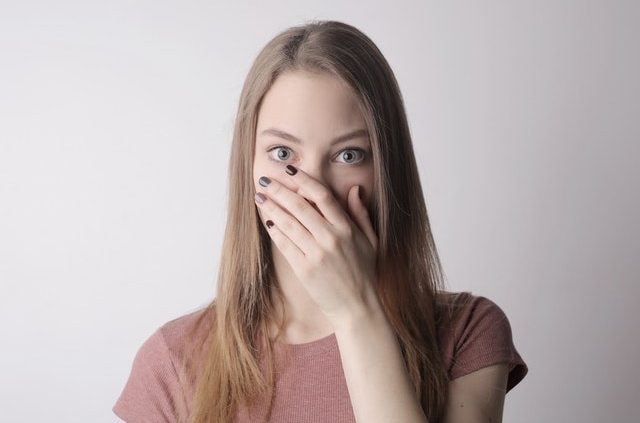
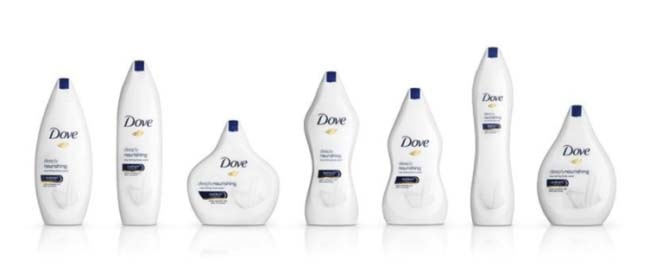
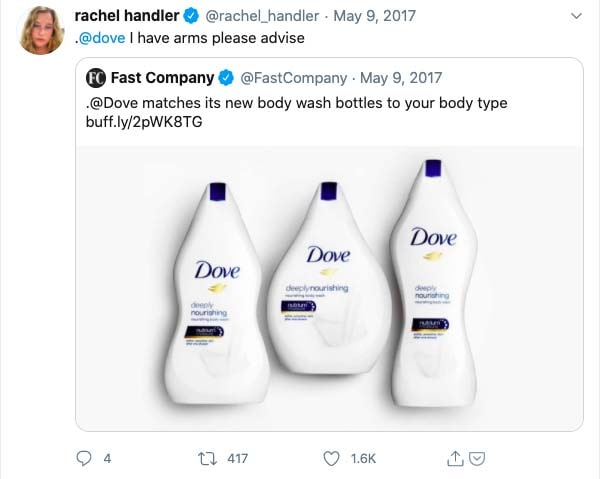
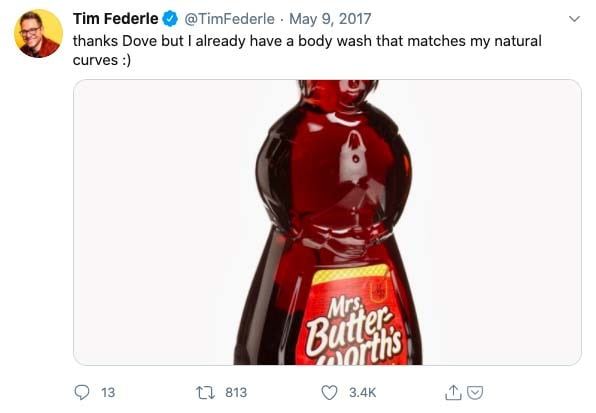
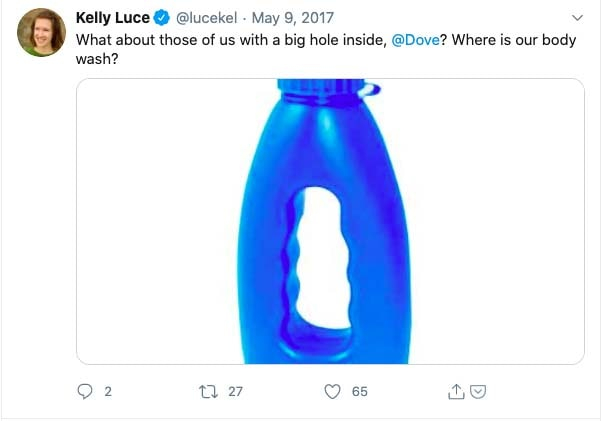
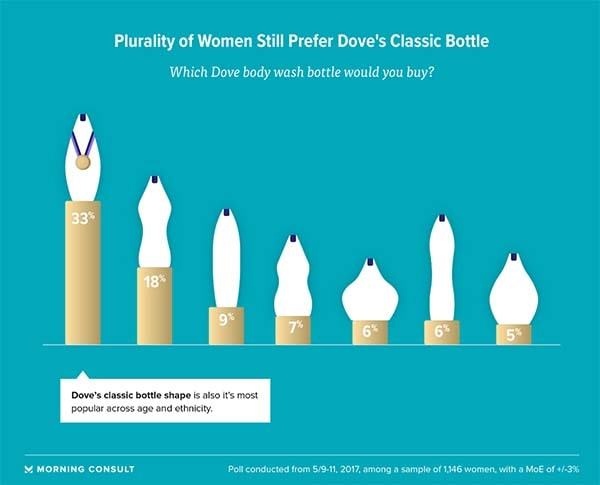


Leave a Reply
Want to join the discussion?Feel free to contribute!